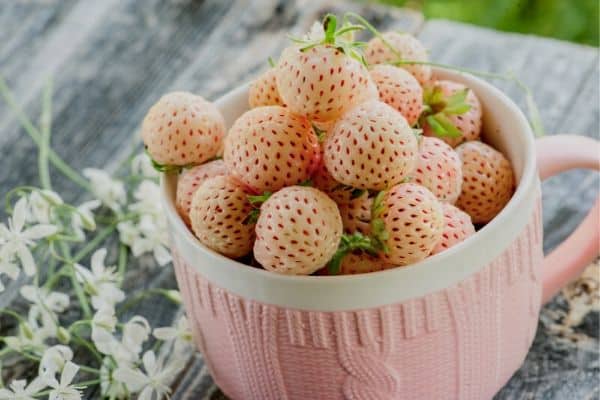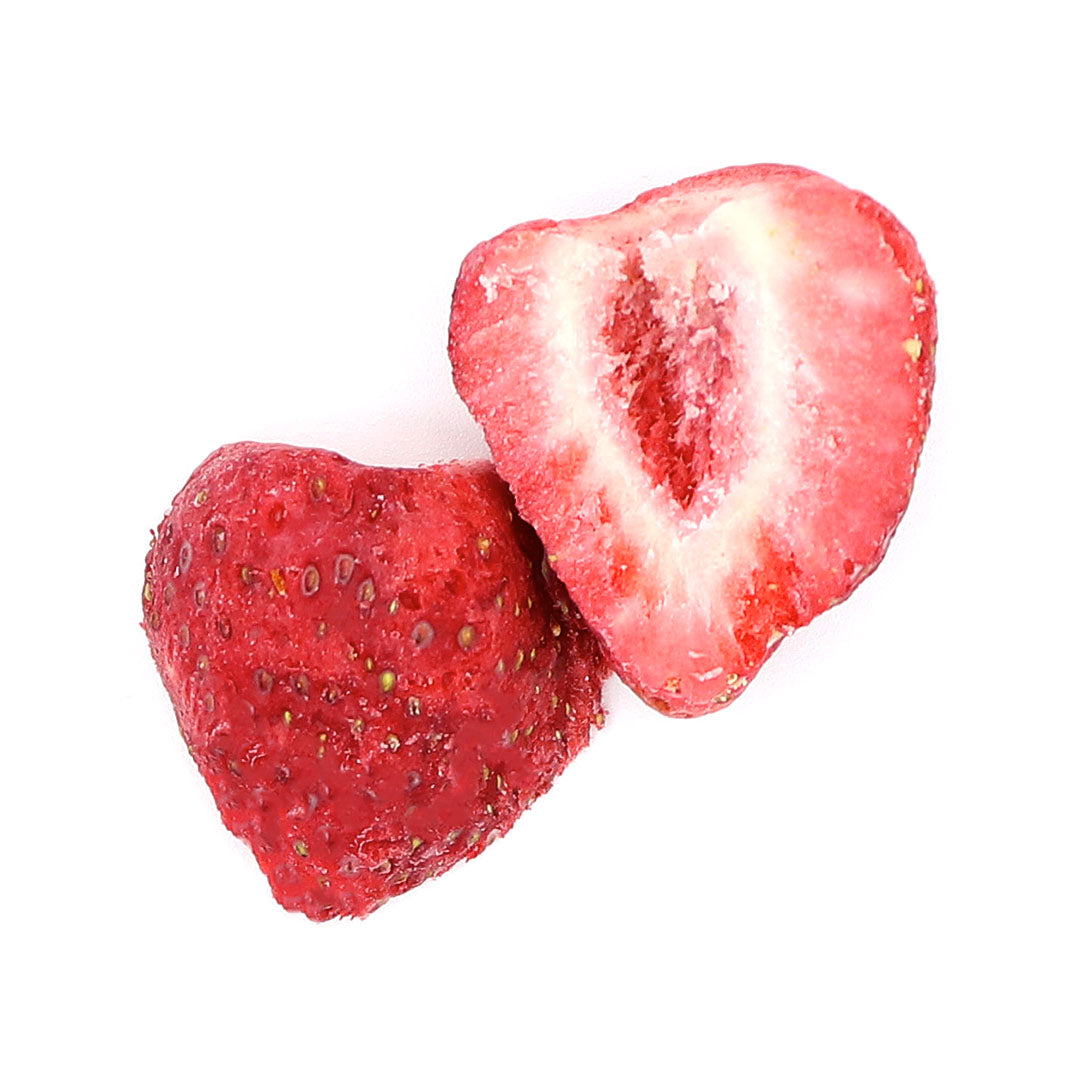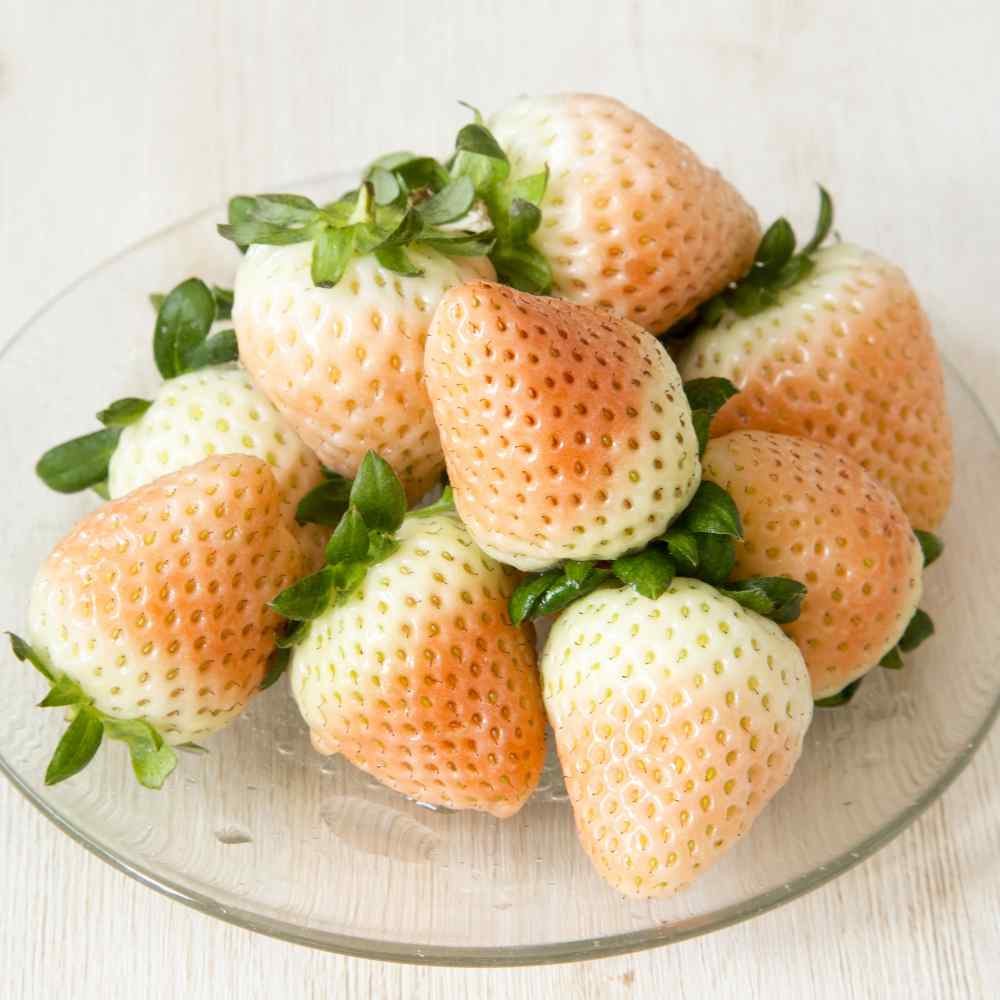


On top of that, white strawberries are sweeter than red strawberries, and they also have a bit of a pineapple flavor to them. The 'White Asuka Ruby' Strawberry plant is a very heavy producer, and the fruits are actually larger than those of a red strawberry. Of course you can always plant them in a more casual fashion in a woodland setting where all of the beautiful white can really brighten things up. Pairing or alternating white & traditional red strawberry plants together really makes a stunning color combination. This makes them a wonderful choice for borders or any organized flower bed. These plants have traditional strawberry-shaped evergreen leaves but are runnerless unlike some varieties of strawberries.

I fell in love with: 'White Asuka Ruby' the moment we met! It has so many fantastic qualities! It will lavish you with lovely white flowers and gorgeous white fruit all season long. The fruit becomes brown, soft, and watery often covered with a gray or white fuzzy growth.White Japanese strawberry new variety: 'White Asuka Ruby'! (Fragaria x Ananassa).Īlthough Japan was late in starting growing strawberries, they probably have the most unusual varieties! Gray mold affects the berries, beginning under the calyx and spreading as fruit touch each other or spores are water splashed to other fruit. Gray mold may also be responsible for a white film on the plant. This white film dries on the underside of the leaf. Infection produces bacterial ooze under humid conditions. Strawberry plants with white film may more likely be attributed to angular leaf spot ( X. Strawberries may be afflicted by other diseases but none of these appear as a white film on the strawberry and include: Consult the manufacturer’s directions for the correct ratio and timing. Sulfur fungicides may also control the powdery mildew but only as a preventative, before symptoms appear. (32 C.) and not within two weeks of using sulfur fungicides. Don’t spray when temps are over 90 degrees F. Spray as soon as symptoms appear, spraying both the upper and underside of the leaves. Use the least toxic options first, such as neem oil, mixed at 1 ounce (30 ml.) to 1 gallon (4 L.) of water. Of course, you may also have to apply a fungicide. Short-day varieties and those that fruit in May and June are slightly more resistant than day neutral or ever-bearing varieties. Also, some strawberries are more resistant to powdery mildew than others. If just the leaves seem to be infected, prune out the infected parts and dispose of any plant detritus from around the berries. Avoid too much fertilizer and use a slow release food. To combat powdery mildew in your berries, place in a sunny area and space the plants to ensure air circulation. Powdery mildew also affects the flowers, resulting in malformed fruit. Eventually, the entire underside of the leaf is covered and the leaves curl upward with the appearance of dark round blotches. Early infection appears as a white powdery coating on the underside of the strawberry leaf. Spores are carried by the wind to infect all parts of the berry. Powdery mildew ( Podosphaera aphanis) infects the tissue of strawberry plants and despite the fact that it’s mildew, which we usually associate with wet conditions, this strawberry leaf coating is fostered by dry conditions with moderate humidity and temps between 60 and 80 degrees F. One of the most common fungal diseases of strawberries is powdery mildew. The same thing may happen in your garden-grown berries– a white to grayish fuzz on the berry itself or coating the strawberry leaf. As mentioned, they are prone to fungal infections that may account for this fuzzy growth. You’ve probably purchased strawberries, put them in the refrigerator, and then a day or two later went to use them only to discover a white film on the strawberries. Wild strawberries are hardy to USDA zones 5 to 9 while cultivated strains are hardy to USDA zones 5 to 8 as perennials and as annuals in USDA zones 9 and 10.

They vary in hardiness depending upon the cultivar. Strawberry plants produce nutritious, aromatic, sweet fruit. What are some common diseases of strawberry and what, if anything, can be done about strawberry plants with a white to grayish film? What’s Wrong with My Strawberries? Strawberries are easy to grow provided you have them in some sun, but even so, they tend to suffer from fungal infections. Have you ever seen a white film on your strawberry fruit and wondered, “What’s wrong with my strawberries?” You aren’t alone.


 0 kommentar(er)
0 kommentar(er)
